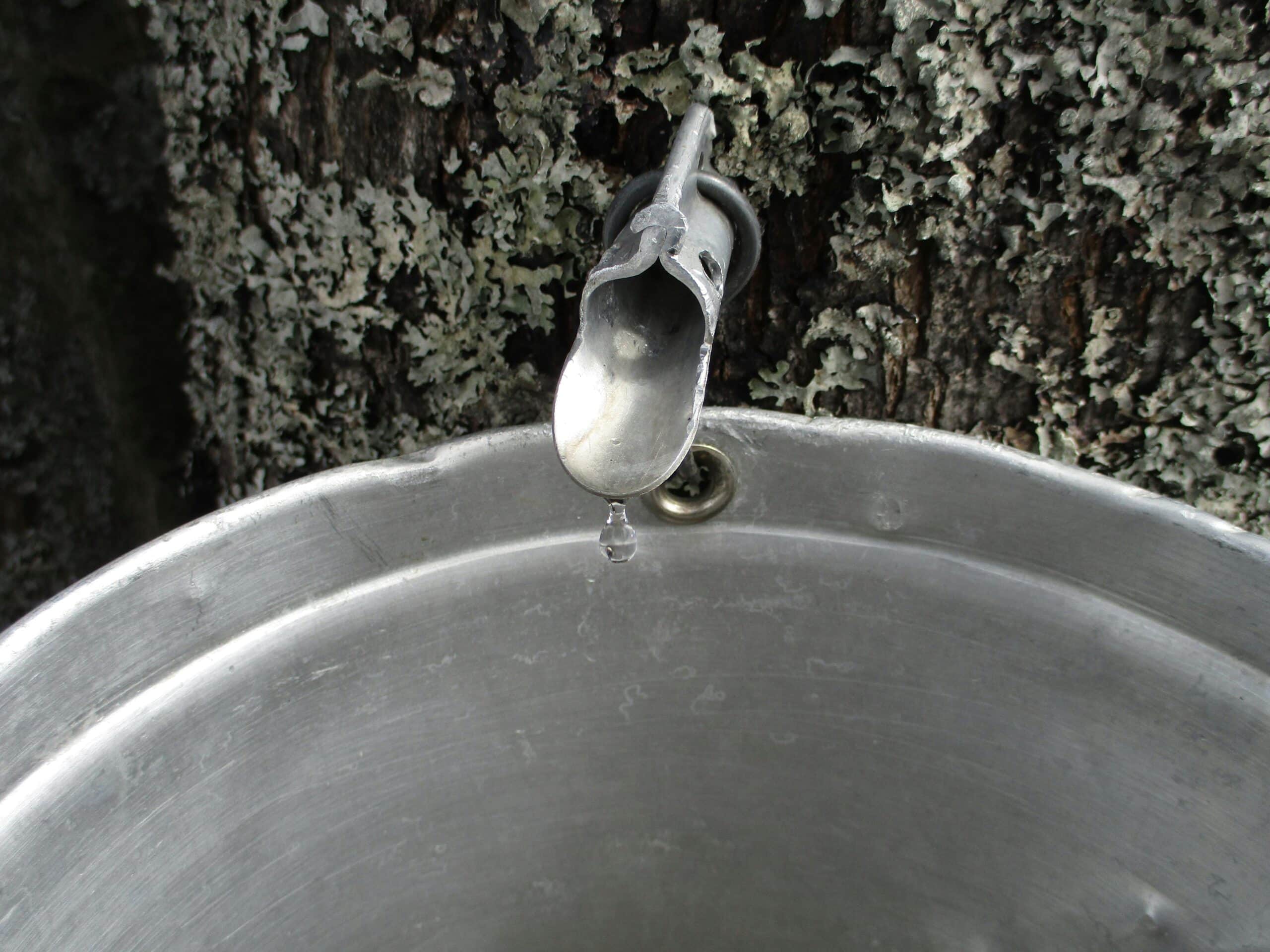
Maple sap is a traditional food source, typically harvested in the spring. Photo by Salomé Maydron (Pexels).
After noticing concerns about the impact of warm weather on maple sugaring, Anishinaabe Knowledge Keeper, Caleb Musgrave shared a message of reassurance and wisdom rooted in Indigenous knowledge. With social media buzzing about the potential harm to sugar maples after a mild winter, he shared that it’s crucial to understand our tree relative before tapping. Tapping too early could hurt the tree. According to Musgrave, the telltale return of crows in large flocks signals the right time. If they’re not back yet, it’s not sugaring season, even if the snow has already been gone for weeks.
Sugar maples, resilient to extreme cold down to -43 C, can handle tapping without harm. However, tapping too early in the season, before deep freezes are over, can cause wider damage to the tree. These majestic beings need between 2400 to 2700 chilling hours per year to thrive. However, they do not necessarily need constant freezing temperatures. “The specific warmest temperature to achieve this is five degrees Celsius,” writes Musgrave. “They don’t need -20 C all winter. They don’t even need zero. All they need to thrive and do their work is five degrees for 100-ish days. We’ve already had that since November.”
Concerns about lack of water due to low snowfall should also be alleviated by the sugar maple’s ability to find water deep below. They have a remarkable root system, including a taproot that performs “hydraulic lift,” providing water even in dry times. In previous warm seasons like 2017 and 2005, sugar bushes reported incredible sap yields, showing the trees can thrive in these conditions.
For those worried, the advice is simple: wait until the end of February to tap, as tradition and Indigenous knowledge dictate. Musgrave reminds us that despite the worrisomely mild conditions this winter, the sugar maple is resilient. The trees will be okay, and so will we.
Trailblazing across borders

Location of The Gordie Howe International Bridge on the Trans Canada Trail (Photo credit)
A new bridge between Windsor and Detroit will connect the Trans Canada Trail to trails in the United States. The Gordie Howe Bridge, slated to be open by 2025, will be the first international border crossing to join the Trans Canada Trail to trails in the US.
The bridge will connect Windsor’s Great Lakes Waterfront Trail to the Iron Belle Trail and Great Lakes Way in Detroit, Michigan. Trail users on both sides of the border will be able to walk or bike over the Detroit River via the multi-use path network.
Elanor McMahon, president and CEO of Trans Canada Trail, said the hope is to encourage economic growth and tourism opportunities on both sides of the border.
“If you want a nature experience … if you want to carry on on your bicycle … and stop in some of the wineries in Essex County, that’s why tourism Windsor-Essex Island is one of our partners … because they understand the benefits of cycle tourism and walking tours that really showcase the history.”
Wolf count suspended due to warm weather
Amid unusually warm temperatures, park officials have suspended the annual winter survey of Isle Royale National Park’s wolf population in Lake Superior. This marks the first time in more than 60 years that this survey — which is vital for understanding the delicate predator-prey balance of wolves and moose on the island — has been put on hold.
Typically, researchers track wolf and moose movements through their prints in the snow, but this year’s lack of sufficient snow cover has made this method impractical. Despite the island’s northern remote location in the far west of Lake Superior, it’s still unseasonably warm. According to the National Weather Service, temperatures in the region have hovered above freezing since January 24, about 7 C above average.
This interruption poses significant challenges for scientists studying the ecological dynamics of the island’s wildlife, emphasizing the impact of anthropogenic climate change on even the most remote ecosystems.



